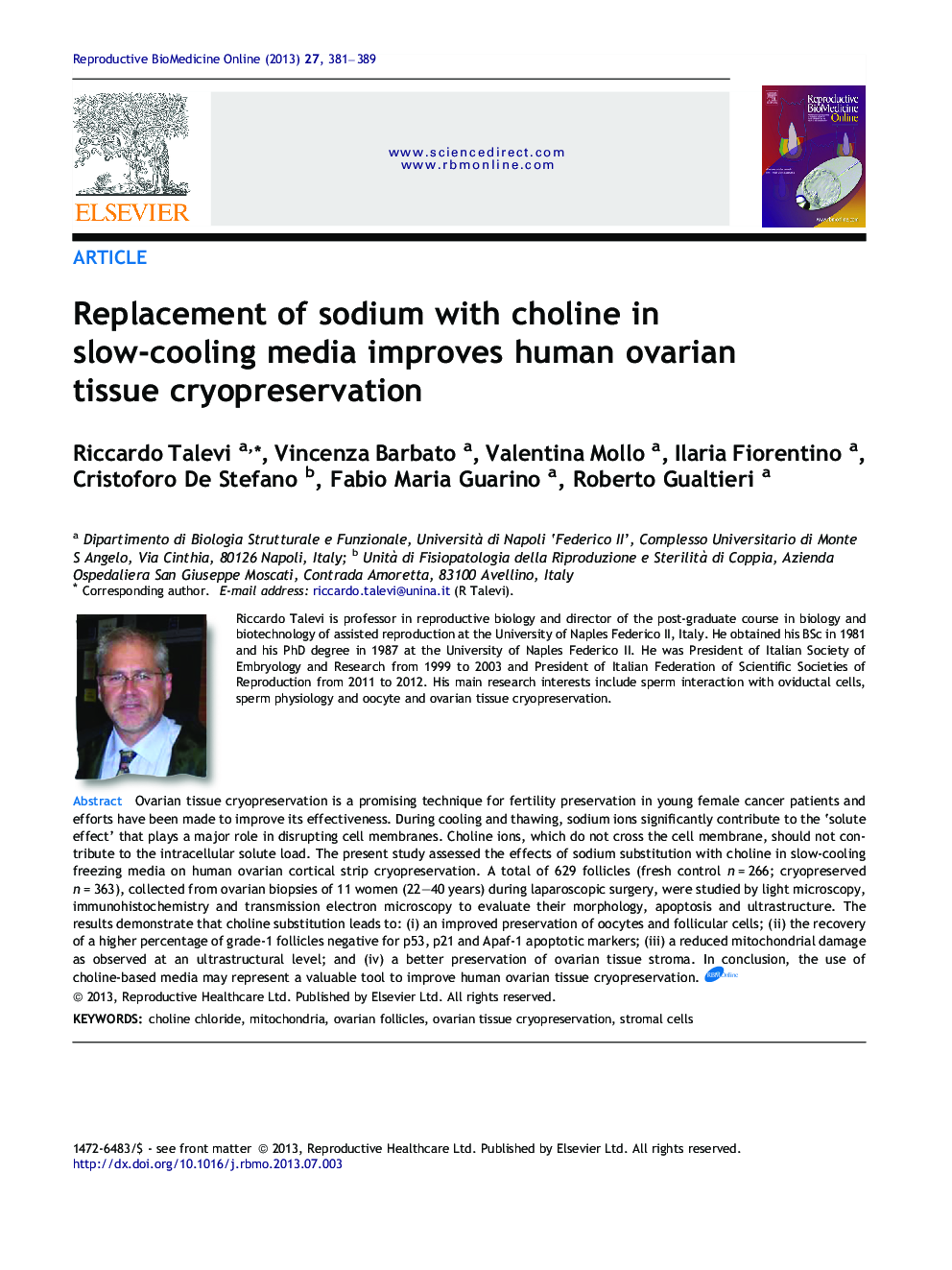| کد مقاله | کد نشریه | سال انتشار | مقاله انگلیسی | نسخه تمام متن |
|---|---|---|---|---|
| 3970244 | 1256712 | 2013 | 9 صفحه PDF | دانلود رایگان |

Ovarian tissue cryopreservation is a promising technique for fertility preservation in young female cancer patients and efforts have been made to improve its effectiveness. During cooling and thawing, sodium ions significantly contribute to the ‘solute effect’ that plays a major role in disrupting cell membranes. Choline ions, which do not cross the cell membrane, should not contribute to the intracellular solute load. The present study assessed the effects of sodium substitution with choline in slow-cooling freezing media on human ovarian cortical strip cryopreservation. A total of 629 follicles (fresh control n = 266; cryopreserved n = 363), collected from ovarian biopsies of 11 women (22–40 years) during laparoscopic surgery, were studied by light microscopy, immunohistochemistry and transmission electron microscopy to evaluate their morphology, apoptosis and ultrastructure. The results demonstrate that choline substitution leads to: (i) an improved preservation of oocytes and follicular cells; (ii) the recovery of a higher percentage of grade-1 follicles negative for p53, p21 and Apaf-1 apoptotic markers; (iii) a reduced mitochondrial damage as observed at an ultrastructural level; and (iv) a better preservation of ovarian tissue stroma. In conclusion, the use of choline-based media may represent a valuable tool to improve human ovarian tissue cryopreservation.Ovarian tissue cryopreservation is a promising fertility preservation approach for cancer patients before undergoing treatments that irreversibly reduce the ovarian reserve. Autotransplantation of ovarian cortical strips has resulted in viable offspring in animal models and human. Worldwide, 20 live births have been reported thus far following autotransplantation of frozen–thawed ovarian tissue. However, currently the success rate of this technology is far from being satisfactory. This could be due to inappropriate cryopreservation procedures that might impair the physiology of ovarian follicles. Sodium ions contained in freezing media significantly contribute to the ‘solute effect’ that plays a major role in disrupting cell membranes. Choline ions, which do not cross the cell membrane, would not be expected to contribute to the intracellular solute load. In the present study we assessed the effects of sodium substitution with choline in slow-cooling freezing media on human ovarian cortical strip cryopreservation. A total of 629 follicles, collected from ovarian biopsies of 11 women (aged 22–40 years) during laparoscopic surgery, have been studied by light microscopy, immunohistochemistry and transmission electron microscopy to evaluate their morphology, apoptosis and ultrastructure. Results demonstrated that choline substitution allowed: (i) a better preservation of oocytes and follicular cells; (ii) the recovery of an higher percentage of healthy follicles negative for apoptotic markers; (iii) a lower mitochondria ultrastructural damage; and (iv) a better preservation of ovarian tissue stroma. In conclusion, the use of choline-based media could represent a valuable tool to cryopreserve human ovarian tissue for fertility preservation.
Journal: Reproductive BioMedicine Online - Volume 27, Issue 4, October 2013, Pages 381–389